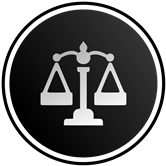Updated on November 01, 2025 05:33:18 PM
In today's financial landscape, promissory notes are important documents for creating a documentation of borrowing deals between interested parties in the modern financial landscape. Promissory notes, which are also legally enforceable documents, outline the specifics of how much and when a loan must be repaid. For both lenders and borrowers, knowing how to write a promissory note is essential as it protects their right and gives clarity over the money. The following is a step-by-step guide to help you to draft up an effective promissory note. It also elaborates on various kinds of promissory notes and their forms discussing the mode to be used for different localities which includes India as well. For expert assistance in drafting secure and legally sound promissory notes, trust the experienced team at Litem Legalis
A promissory note is a written, unconditional promise by one party, enforceable in court or other proper judicial forum, to pay a sum certain amount, on demand or on a fixed date. This finance instrument represents the written evidence of debt and consists of the term under which repayment of the amount borrowed is supposed to be taking place, such as the loan amount, rate of interest, and payment schedule.
The promissory note has played a significant role in making the loaning with two individuals or two companies very formal. It protects both the borrower and the lender by fully stating what is expected of either party. Other times, it is to be used when companies cannot have regular financing from a lending institution; hence, allowing such companies to acquire loans without giving any form of loan guarantee.
A typical promissory note includes several essential elements:
Additional parts could be the extra charges and fees, penalty, consequences of default, and the law for the note.
There are various types of promissory notes, each serving different purposes:
Promissory notes are used in different situations, including student loans, mortgages, and funding various business-related initiatives. They are flexible and can be transferred; sold; assigned to other; people making them a powerful financial tool in today’s economy.
Before preparing a promissory note, the basic information needs to be gathered. It is complete with the legal names, physical addresses and phone numbers of both the borrower and lender. And co-signers if applicable. How much money you borrow, your interest rate (this is generally an APR -annual percentage rates), and how long that loan will have to be repaid are important details so gather them. Also, the person must decide whether or not a debt is going to be attached. They must take description and valuation of the collateral if any in case of secured loans
However, instead of beginning with the creation of a promissory note from scratch, one could use an existing template or build one. Some of the available promissory note templates include secured promissory note, unsecured promissory note, demand note, or installment note. The format selected should best suit the context of the loan agreement in its most detailed aspect.
When completing the promissory note, one should include:
Additional details may include prepayment processes, late payment fees, and any specific purpose for the loan.
State Laws and Regulations
Promissory notes are subject to numerous state laws and regulations. In India, promissory notes are produced under the provisions of Section 4 of the Negotiable Instruments Act enacted 1881. The Indian Negotiable Instruments Act treats promissory note as one of the three negotiable instruments. Of importance, a promissory note from one India State can be transferred to another state without re-stamping, as long as a valid stamp is posted on the document.
To ensure enforceability, a promissory note must contain specific information:
It's crucial to note that a promissory note has to be written by hand and the only term included should just revolve around repayment promise, nothing more.
It’s not a requirement for a promissory note to be notarized to be legally binding, doing so may provide additional security in verifying authenticity. In the process of notarization, the notary public has to verify the identities of the signatories and also witness the signing process. These steps may prove particularly helpful in case of disputes: notarizing makes it more difficult to challenge the document in court. While it is not an absolute necessity, there would be better legal weight if there is a witness signature independent of the parties to the note.
Validity of the promissory notes made should be noted to last for three years from the date of execution after which, it will expire. In the case of full payment due on the note, it shall be canceled, marked "Paid in Full" and returned to the borrower.
In the light of and in the best interest of the parties' rights and protection, the promissory note is one document that must be prepared. Following are the highlights in preparing a sound, legal promissory note categorizing them by its necessary elements, available types, and procedural system: With the following instructions and the indicated legal considerations, clients and businesses may be certain that their loan agreements are clear, binding, and in total compliance with the applicable law.
It is befitting to note that, although promissory notes allow for flexibility in lending, the same should be prepared with due care shown. It is worth taking legal advice to ensure that the promissory note meets all set out requirements and serves its purpose appropriately. If the proper procedure is implemented, a well-prepared promissory note can become a strong foundation for financial involvement, thus offering confidence to both parties.Protect your investments—consult Litem Legalis for expert promissory note preparation.

Legal Consultation

Expert Lawyers

Lowest Fees

Quick Process
To prepare a simple promissory note, the following details should be included; The date, the amount of loan given and/or borrowed, secured or unsecured, details of the collateral if any, the interest rate, and details for delivery by the secured property to the holder if any.
A promissory note should include all these features to help define the obligations of the two parties. These are details such as the physical and email addresses of both the lender and the borrower, the loan amount, the date of agreement and if it was notarized, the interest rate, the frequency and method of payment, and the overall repayment terms.
In the formation of a promissory note, it is recommended that the borrower’s full legal name and his lender’s full legal name, address, and contact information be captured. If there is a co-signer then their details should also be provided. Express the amount borrowed, any repayment details, any interest charged, and when it is due or when it is to be paid.
A promise to pay contract should include the date on which the contract is made, full names and addresses of both the borrower and lender, principal amount loaned, and the interest rate per annum. This contract specifies the terms of paying back the borrowed money or repaying the debt by the borrower.
Disclaimer: The content provided on this site is intended for informational purposes only. Accessing or utilizing this site and its materials does not establish an attorney-client relationship. The information contained herein does not constitute legal or professional advice and should not be relied upon as such. It is not a substitute for obtaining legal counsel from a qualified attorney licensed in your jurisdiction.